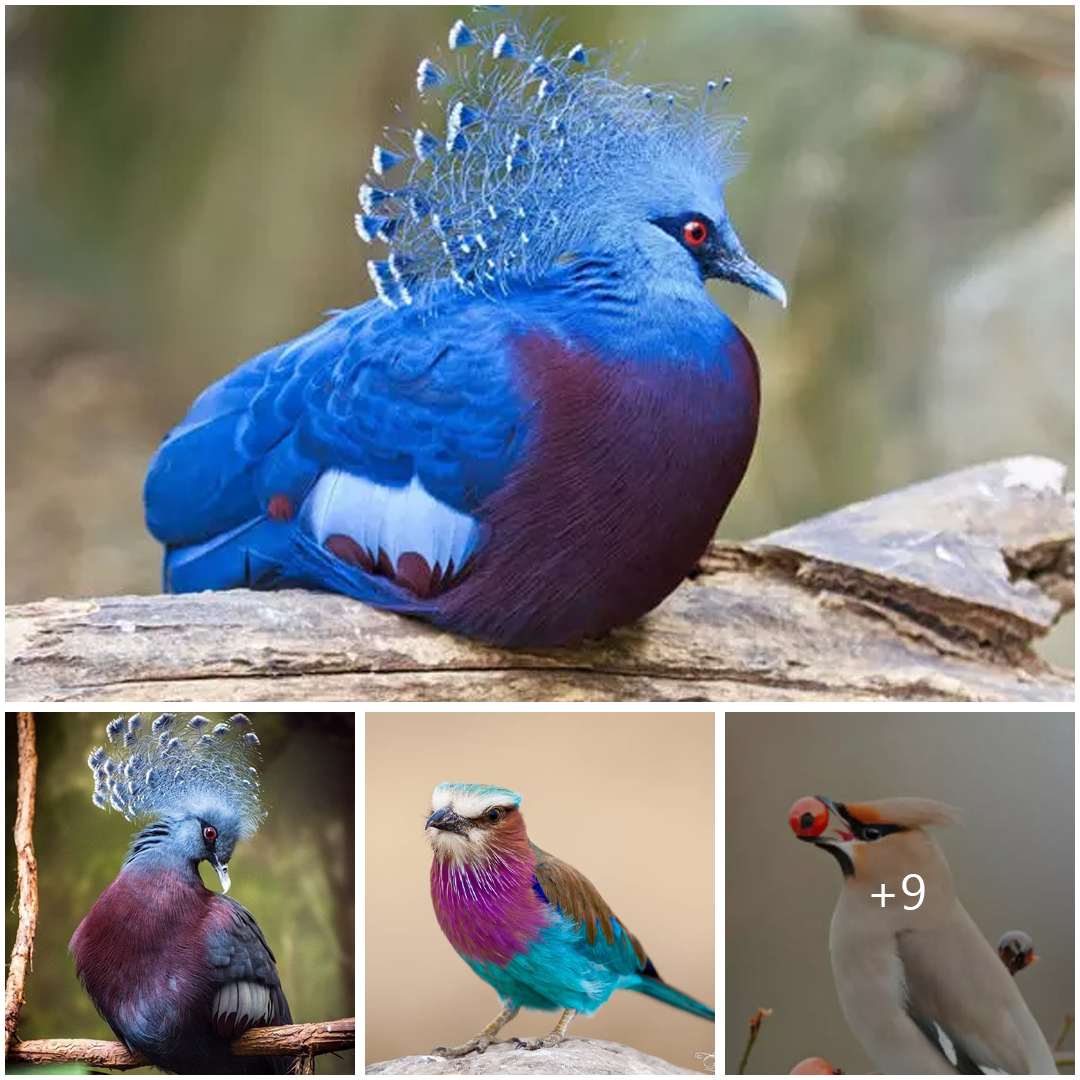
:focal(800x602:801x603)/https://tf-cmsv2-smithsonianmag-media.s3.amazonaws.com/filer_public/24/f7/24f76caf-c8f2-4b3e-b5f1-931ec81bb4f4/shb_apr_final_web.jpg)
The early morning air at Hindhede Nature Park in central Singapore is filled with bird calls. But one birdsong clearly stands out from the rest—the long, gurgling call of the straw-headed bulbul (Pycnonotus zeylanicus). “Whenever I hear its resonant, bubbly song, the forest seems to erupt with life,” says conservationist Ho Hua Chew, one of the first two people to study the species in Singapore.
To the bird’s detriment, its melodic call has made it one of the most sought-after species in the Asian songbird trade. Each year, thousands of birds with pleasing calls are taken from Southeast Asia’s forests to be kept at home for entertainment or to participate in singing competitions, leading to a rapid decline in their wild populations. More than 40 species are severely threatened by the songbird trade.
The straw-headed bulbul’s population across its range in Southeast Asia has been decimated to meet this demand. The International Union for Conservation of Nature (IUCN) currently lists the bird as critically endangered. The species is believed to be already extinct in Thailand and likely Myanmar, as well as likely extinct on the Indonesian islands of Java and Sumatra. The populations in peninsular Malaysia and Indonesian Borneo are also declining rapidly.
The only place to buck the straw-headed bulbul’s declining trend is the city-state of Singapore. The highly urbanized island nation has emerged as an unexpected haven for the species, where the bird’s population is slowly, but steadily, increasing, thanks to over three decades of conservation actions.
Based on the latest estimate, published in 2020, Singapore is home to about 600 straw-headed bulbuls. This constitutes between 23 and 57 percent of the global population of the species, based on the 2018 BirdLife International assessment of fewer than 2,499 individuals. Within the city-state, the straw-headed bulbul population is spread across the 274-square-mile main island, as well as on the 4-square-mile offshore island of Pulau Ubin, where about half of the species’ local population resides. This makes the conservation of Pulau Ubin—a granite quarrying site in the 1970s that is now a nature area—particularly crucial for the survival of the species.
The effort to protect the straw-headed bulbul began more than 30 years ago. The Bird Group of the conservation nonprofit Nature Society Singapore, of which Ho has been an active member since the mid-1980s, led the campaign to protect Pulau Ubin and a few zones on the main island inhabited by the species. In 1990, the society published the Master Plan for the Conservation of Nature in Singapore, which highlighted the need for the conservation of these areas.
Simultaneously, the society campaigned via newspapers and other mass media channels to create public awareness about Singapore’s biodiversity. These advocacy initiatives bore fruit when Pulau Ubin was designated a Nature Area by the authorities in 1993.
Around the same time, an attempt was made by the Nature Society Singapore in partnership with other local organizations, to document all the plant and animal species of the city-state, in the form of the Singapore Red Data Book. The first edition of this book, published in 1994, listed the straw-headed bulbul as “vulnerable,” meaning the population had declined 30 percent or more in over three generations or ten years. According to 2001 estimates, about 76 to 93 of the birds lived on the main island, while the population size on Pulau Ubin was estimated to be at least 64 adult individuals. Continued threats to the species in the form of habitat loss and degradation necessitated its status to be uplisted to “endangered,” in the Red Data Book’s second edition published in 2008, indicative of a population decline of 50 percent or more over three generations or ten years.
Ho’s earliest sighting of the straw-headed bulbul was in 1987 at Pulau Ubin. As part of his master’s thesis, submitted in 2001, Ho studied the Pulau Ubin population and observed something interesting about the bird’s behavior. “It’s a forest edge species,” he says. “It prefers the edges of its habitat rather than the interior.”
This finding provided a ray of hope for the bird’s conservation, as many of Singapore’s forested areas were already fragmented and degraded due to widespread urbanization. “Any effort to conserve the bird does not need an extensive forest area to be set aside for them,” Ho says. “It’s possible for the species to survive in proximity to an urbanized area.” However, too much fragmentation can be harmful, as it deprives the birds of food sources, nesting sites and other resources necessary for their survival.
Unlike in other range countries, the high awareness levels in Singapore, coupled with strict environmental laws, such as the Endangered Species (Import and Export) Act of 2006, means that poaching, trapping and trading of the straw-headed bulbul has not been a major issue there. More habitats of the species on the main island, such as the mangroves of Mandai and Khatib Bongsu, are also being granted protection.
Following three decades of advocacy and awareness programs, in May 2019, the Bird Group of the Nature Society Singapore, together with BirdLife International, organized the very first workshop for the conservation of the straw-headed bulbul. Participants—including the National Parks Board, which is responsible for managing the city’s wildlife and biodiversity—sat together to share existing knowledge and identify the conservation measures required to protect the species in Singapore.
The workshop led to the creation in 2021 of the Straw-Headed Bulbul Working Group, co-led by the National Parks Board and the Nature Society Singapore, and which also includes government agencies, local and international conservation nonprofits, and universities. After two years of consultations and discussions, the working group released the National Species Action Plan, a five-year project. “The plan aims to ensure that the species continues to thrive in Singapore,” says Sophianne Araib, the group director at the National Biodiversity Center of the National Parks Board.
The plan focuses on improving the monitoring and observation of the species, documenting the genetic diversity of the local population, creating awareness about conserving the bird, and working with urban planning authorities to protect habitat. It also intends to monitor the bird shops and bird farms to ensure no straw-headed bulbuls are commercially imported into Singapore.
Ho, who was not directly involved with the Species Action Plan, is enthused by its launch. “It’s a major move by the government to conserve the bird not just in Singapore, but also globally,” he says. Ho believes that if the measures outlined in the Species Action Plan are successful, then straw-headed bulbuls from Singapore could possibly help revive the population in areas where the bird is now either extinct or close to extinction.
In another encouraging development for the conservation of the straw-headed bulbul, in November 2023, the species was added to Appendix I of the Convention on International Trade in Endangered Species of Wild Fauna and Flora, a treaty signed by 184 parties. The petition to add the bird to Appendix I was filed jointly by Singapore, Malaysia and the United States. This appendix lists the most endangered plant and animal species, and being added to it means that any international trade in the bird is prohibited, except for noncommercial purposes like scientific research. This development, Araib says, “reflects Singapore’s commitment and collaboration with regional and international partners in efforts to tackle the global issue of illegal wildlife trade.”
Thanks to the conservation measures spearheaded by this enterprising city-state and its dedicated conservationists, the fate of the species is a bit more secure. “Earlier we could only see the bird in Pulau Ubin or certain parts of Singapore like the Central Catchment Area,” says avid birder and Nature Society Singapore volunteer Betty Shaw. “More recently, when we venture to other parts of the [main] island, we hear the straw-headed bulbul in areas where we really didn’t expect to hear them.”





